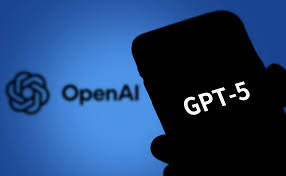OpenAI has announced sweeping updates to ChatGPT, including routing sensitive conversations to its more advanced GPT-5 model and rolling out parental controls for teenage users. The move comes amid heightened scrutiny of how AI chatbots handle emotionally vulnerable interactions.
OpenAI said future versions of ChatGPT will automatically redirect conversations flagged as sensitive or high-risk to GPT-5 or similar reasoning models. The aim is to provide responses that are more nuanced, empathetic, and contextually aware.
This change follows criticism that existing safeguards can wear down in long conversations, sometimes leading to unsafe or unhelpful guidance. By elevating such exchanges to higher-capacity models, OpenAI hopes to better assist people in distress and reduce risks of harm.
Parental Controls for Teens
A major addition is the introduction of parental controls for users aged 13 to 17. Guardians will soon be able to link accounts, set behavioral restrictions, disable chat history, and receive alerts if a child appears to be experiencing emotional distress.
The company said the controls are designed to balance safety with autonomy, giving families tools to monitor use without blocking teens from educational and creative applications of the technology. Rollout is expected in the coming months, with gradual testing across regions.
The updates arrive in the wake of a wrongful death lawsuit that placed OpenAI under intense public and legal pressure. Families and advocates have raised alarms about the role of AI in sensitive contexts, particularly involving minors.
OpenAI has since expanded consultations with its Expert Council on Well-Being and AI and engaged more than 90 physicians across 30 countries to help guide policies. The company frames the changes as part of a broader commitment to making ChatGPT more responsible in real-world use.
Why it Matters
By formalizing parental oversight and routing sensitive conversations to advanced models, OpenAI may be setting a precedent that competitors and regulators cannot ignore. Industry analysts suggest these measures could become a baseline expectation for AI chat services, especially as governments push for stricter age-related protections online.
For policymakers, the inclusion of distress alerts for parents could open debates about privacy, autonomy, and the right balance between oversight and independence for teenagers. It could also accelerate efforts to codify safety standards for generative AI tools.
Critics caution that the changes may be difficult to enforce. Teen users can resist account linking or find ways to bypass restrictions. Even advanced models like GPT-5 may still misread complex emotional signals or provide flawed advice. And while parental oversight may reassure some families, it could raise new concerns about surveillance and data privacy.
For OpenAI, the challenge is to prove that technical adjustments and policy safeguards can meaningfully protect vulnerable users without stifling innovation.
As AI systems play larger roles in education, health, and daily communication, the question grows sharper: should society rely on algorithms to detect and manage human distress—or should human-led safety nets remain the final safeguard?
Talking Points
OpenAI’s safety upgrades come in the shadow of lawsuits and tragic headlines. Let’s not mistake this for corporate benevolence—it’s risk management. The tech industry has a habit of moving fast, breaking things, and then repackaging fixes as progress. Regulators and civil society, especially in Africa, need to hold companies accountable, not just clap for them when they patch up the damage.
If AI companies set the standards for safety without input from African regulators, educators, or parents, then Africa risks becoming a consumer, not a shaper, of global AI rules. With millions of young Africans poised to be the largest demographic of internet users by 2030, the continent must demand a seat at the table before safety features are designed only for Western contexts.
Routing sensitive conversations to GPT-5 isn’t just about accuracy; it’s about control. Who decides what counts as “sensitive”? Could dissent, political frustrations, or even activism be quietly filtered under the same banner? In regions where free expression is already fragile, this isn’t just a tech issue—it’s a democracy issue.





